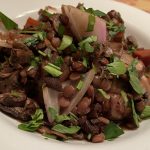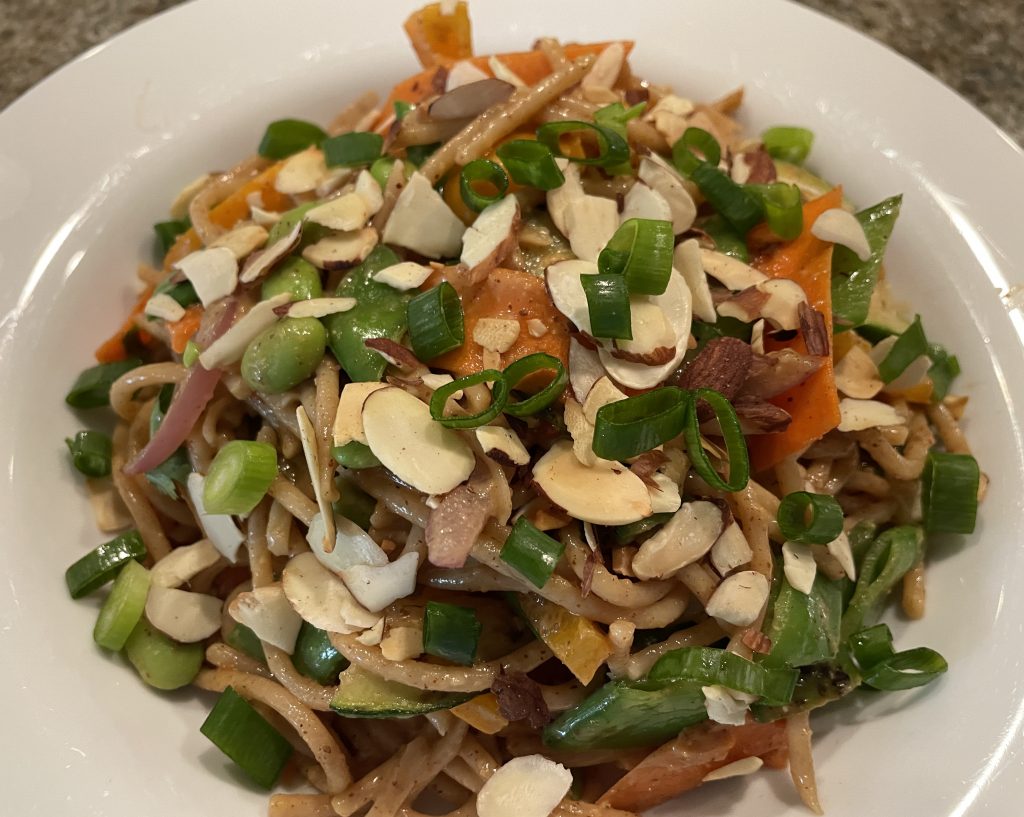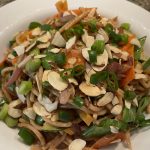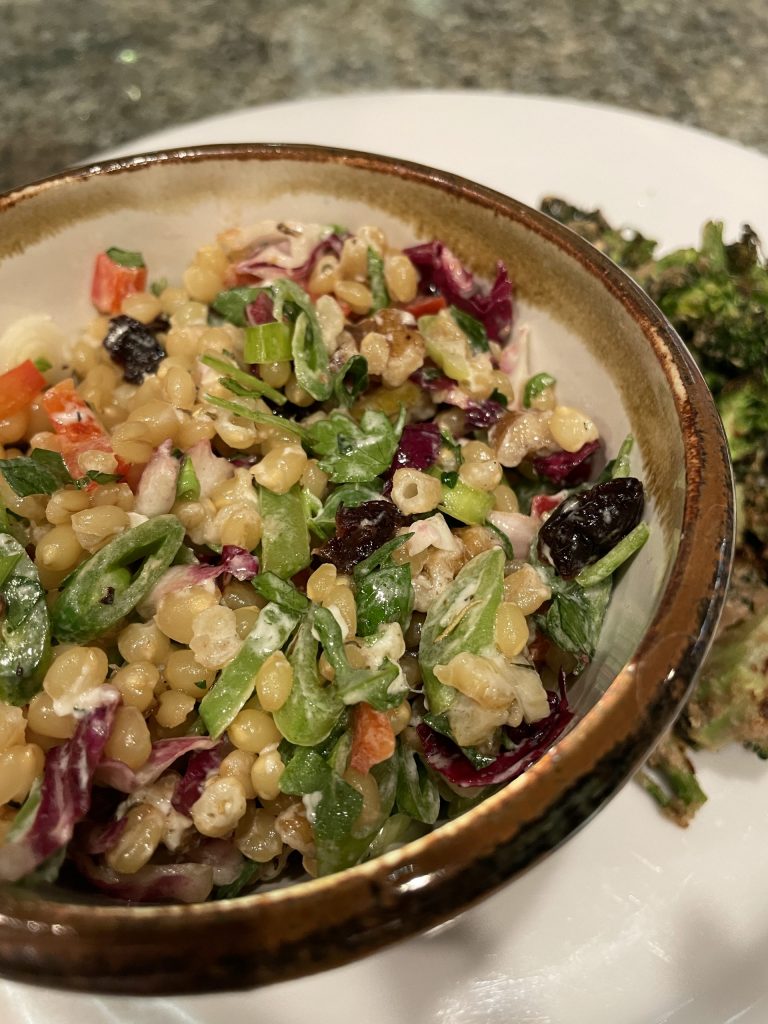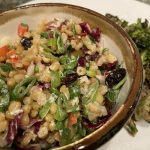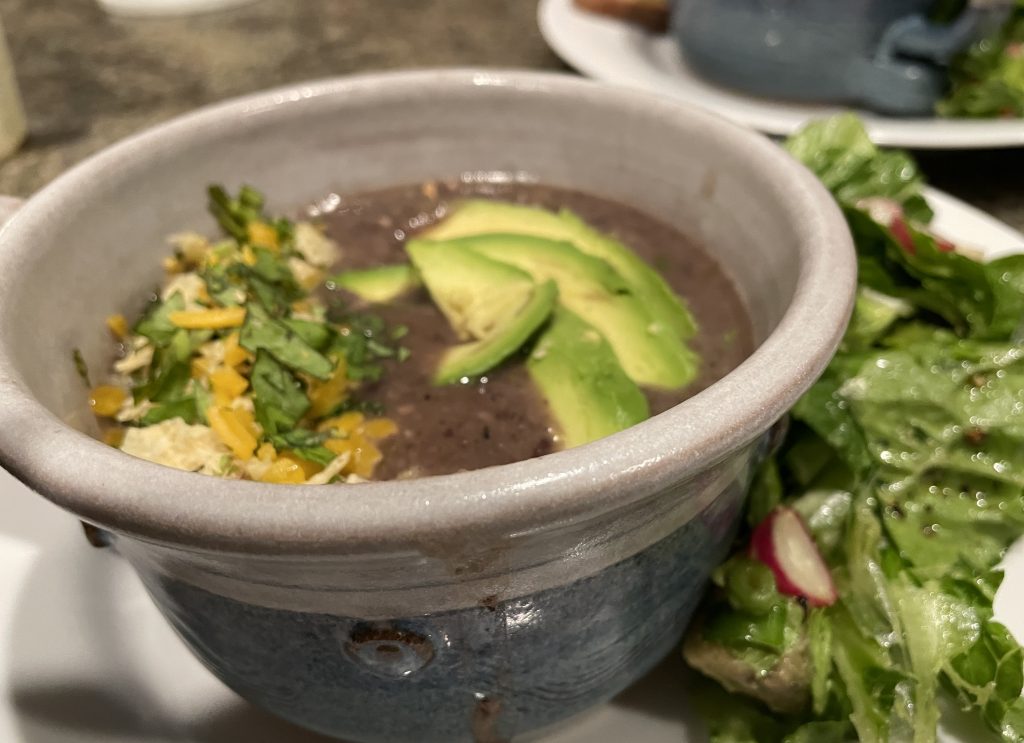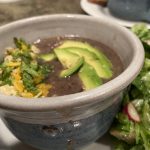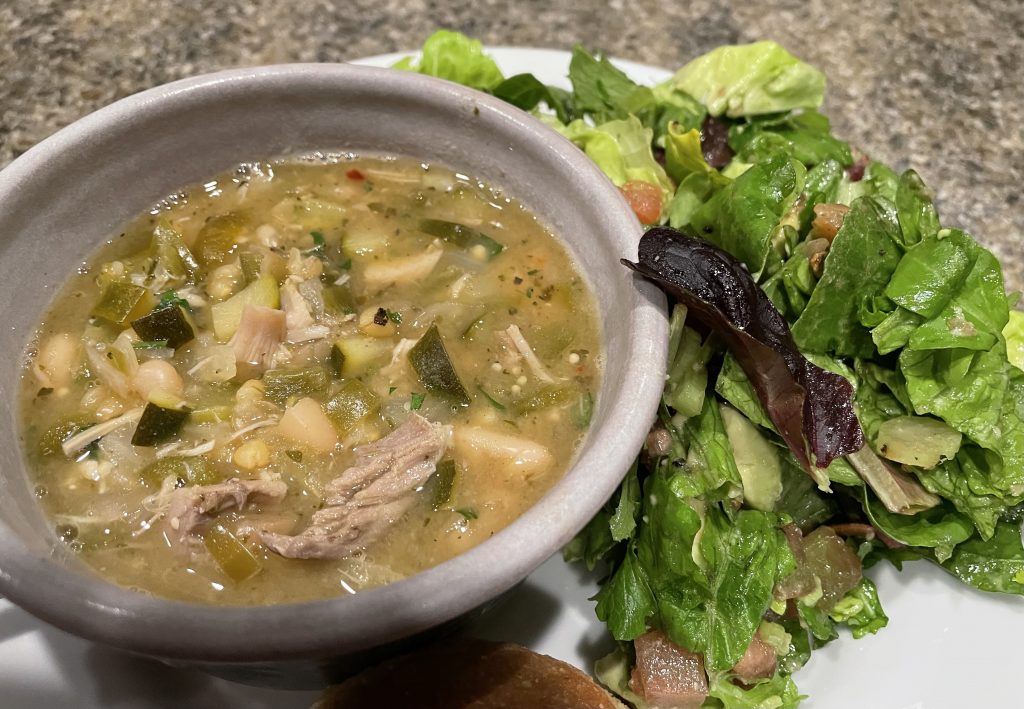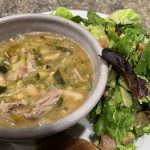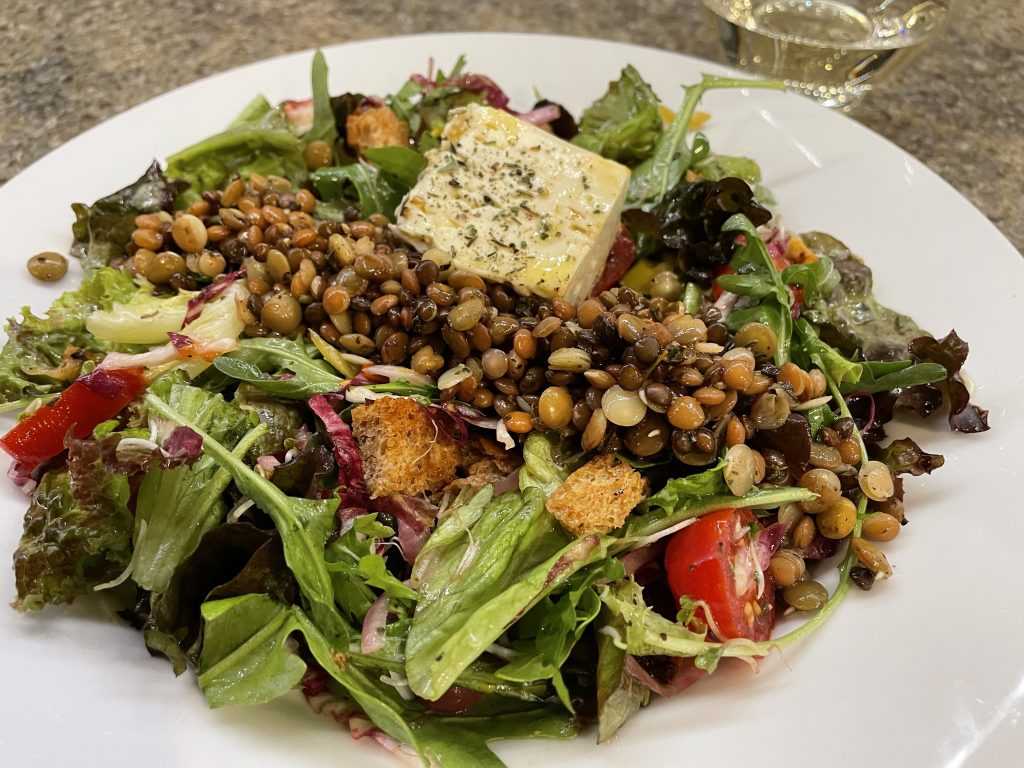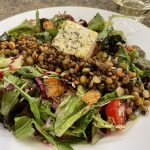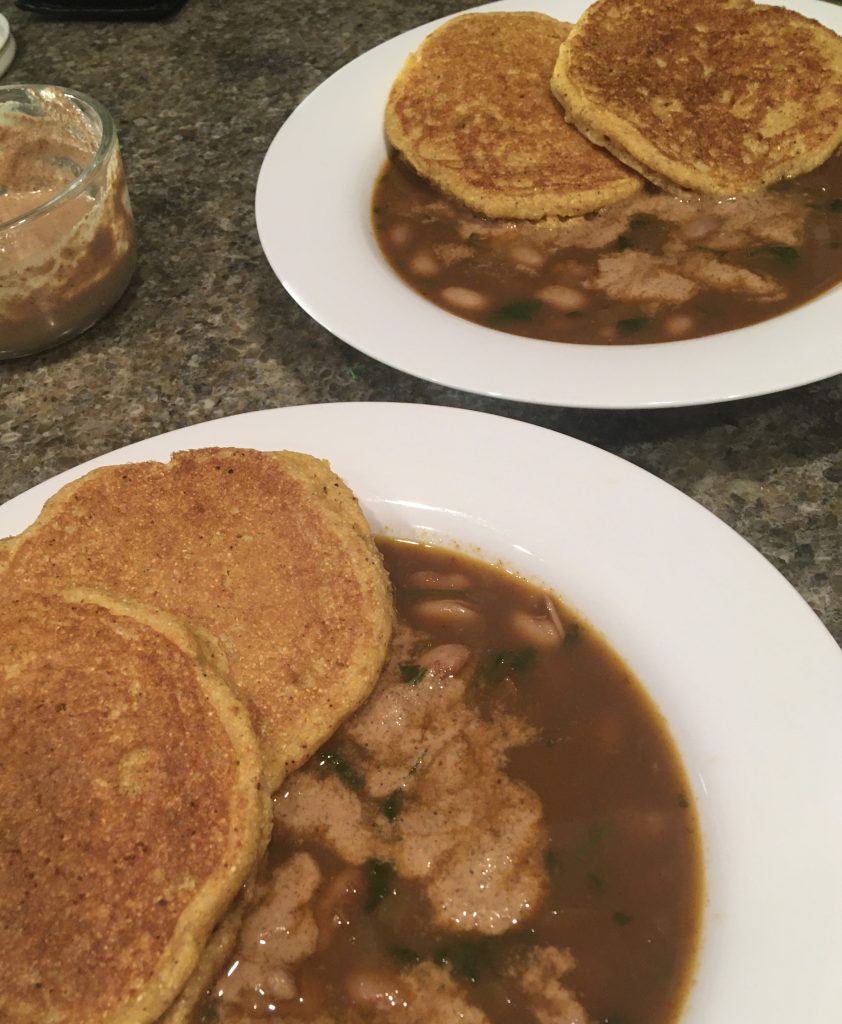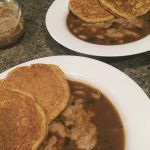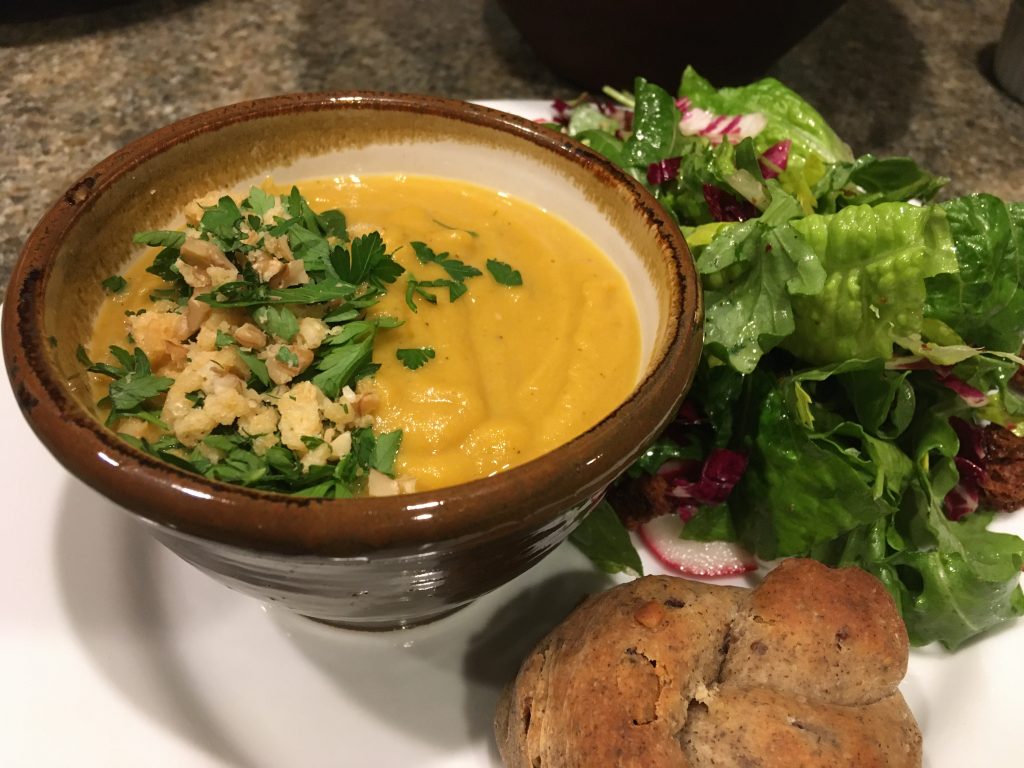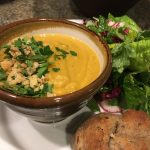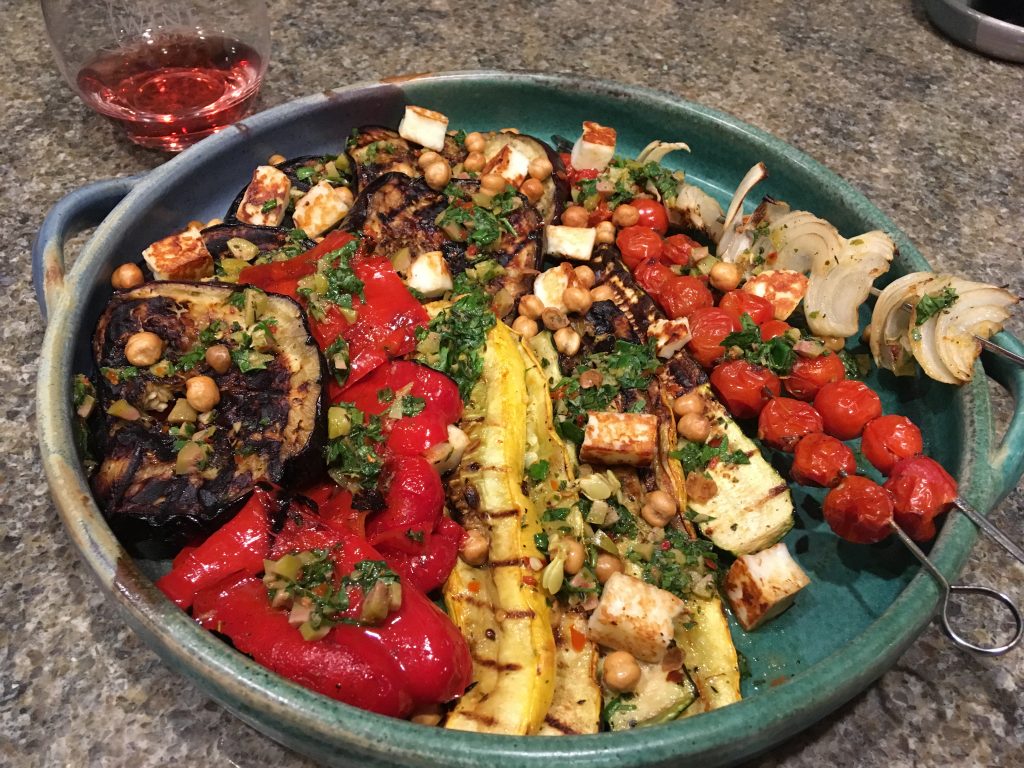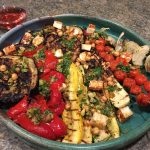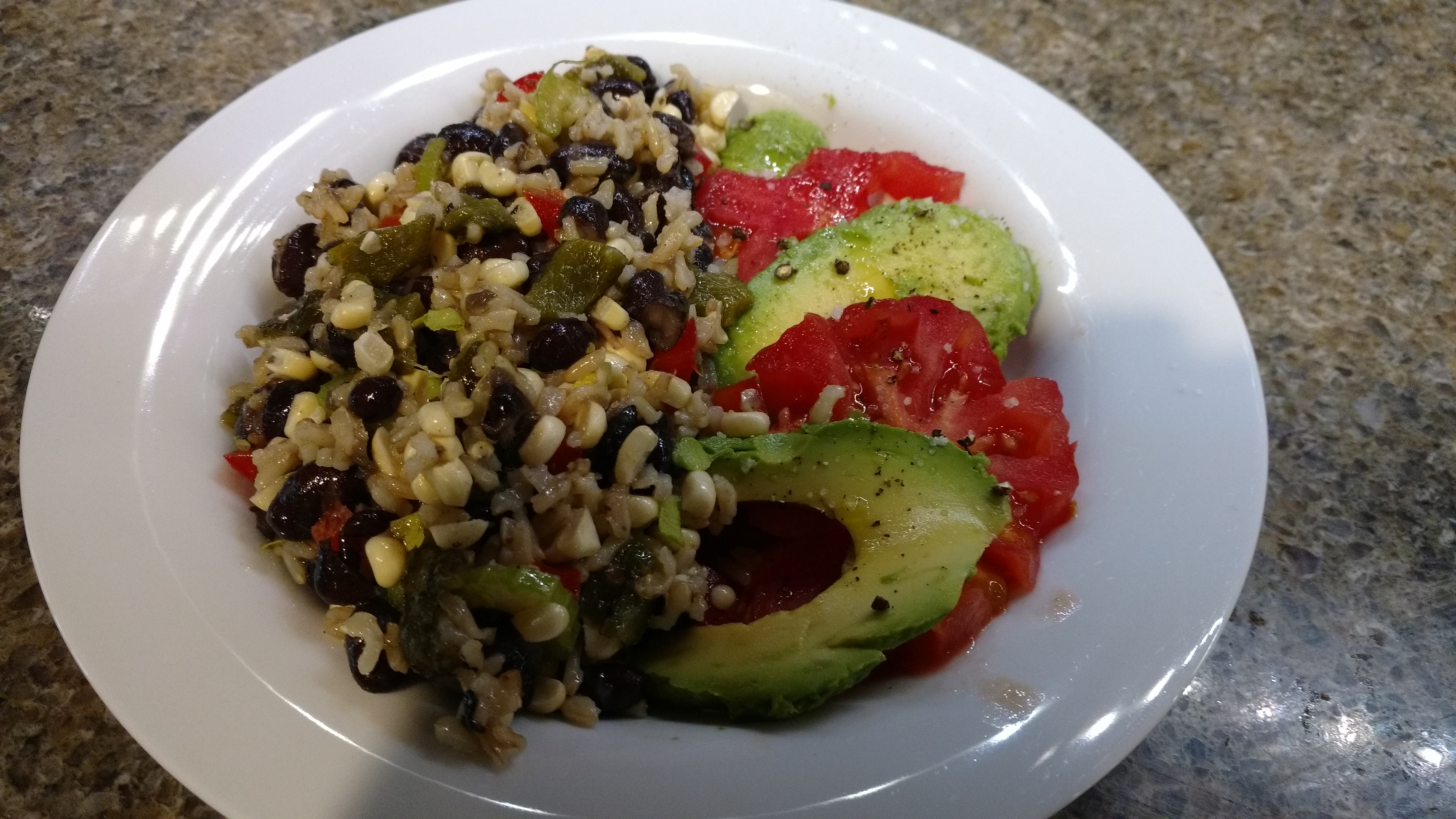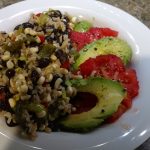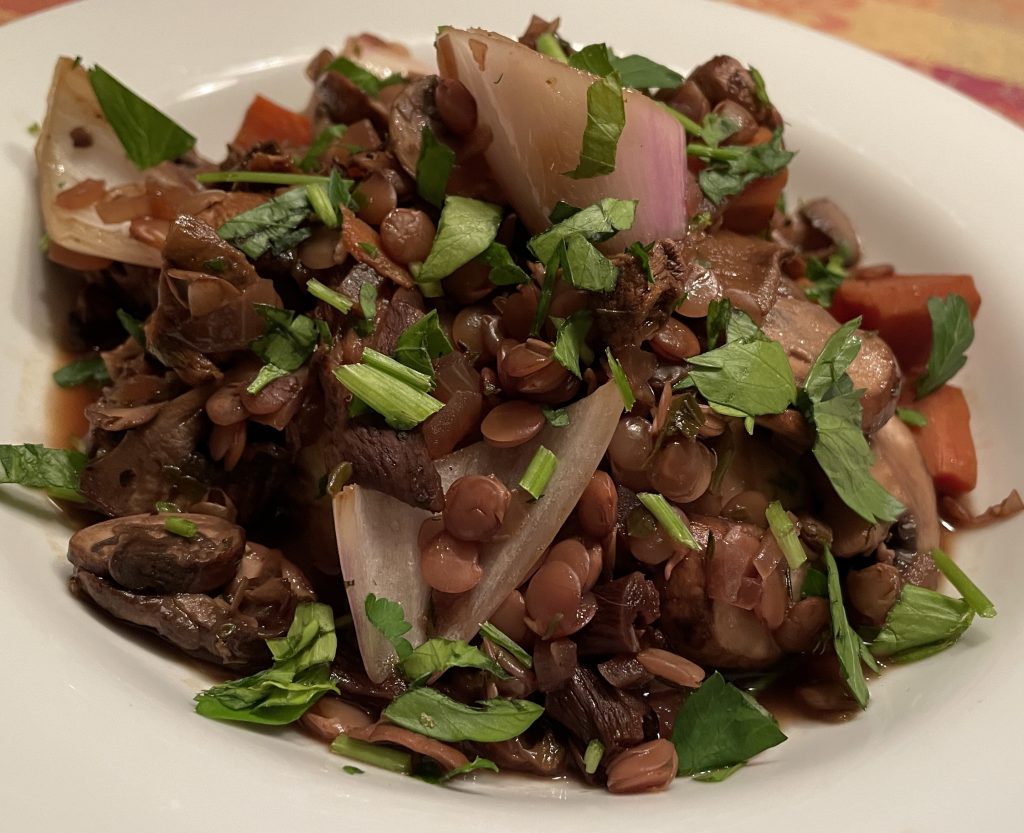
As I write this, winter storms are raging across the country, bringing a variety of generally uncomfortable weather conditions to all. Here, it’s a cold and rainy weekend in the desert southwest, with snow in the upper elevations. Summer here is downright hot. One can count on this. The winters are not nearly so predictable these days. I’m bundled up in a heavy sweater and fuzzy socks, much as I might have been on a winter’s day on the farm. Cue the comfort food again… On days like today, Mom cooked meaty rib-sticking stews and braises, to warm one from the inside out. One of her favorites was a long slow braise of beef in red wine, aka beef bourguignon.
Tough meat has been braised in red wine since the middle ages; the acid in the wine in combination with long slow heat breaks down the tough connective fibers to produce a tender stew. Alcohol? Again? I, along with everyone who reads this blog, laughs at my propensity for using alcohol in my cooking. In fact, I learned to do this at my mother’s knee.
But there is method behind the madness, because alcohol is a flavor enhancer, much like salt or pepper. When one tastes a dish, the tongue can taste water soluble flavors. But one gets more complete flavor when the molecules are sensed in the nose as well. These aromas are carried by fat soluble molecules. Alcohol can bond with both types of molecules, broadening and expanding flavor considerably. The particular wine used in today’s stew recipe is Burgundy. Burgundies are French wine blends based on the pinot noir grape. I am not picky about the wine here; it does not need to be high end pinot noir. An inexpensive wine will produce a delicious stew with deep flavor.
But… I’m not eating much beef these days, for both health and environmental reasons. So I’m looking for red wine to bridge my flavors using plant based ingredients. I’ve cooked lentils in red wine for many years, another of those recipes that came from somewhere now unknown. Served over mashed potatoes, it offers the rich burgundy fueled flavor without the meat. The lentils provide the protein, but I knew something was missing. When I recently glanced at Mom’s recipe, I realized what it needed was vegetables! Duh. Shallots, carrots and mushrooms “beefed” the recipe up significantly. (Pun intended, sadly.) I also tossed in some soaked dried mushrooms, to maximize the umami character and meaty texture. This stew, ladled atop my homemade mashed potatoes, is about as delicious as a plant based stew can be.
Plant based diets continue to punch above their weight in the media, particularly as January is the home of “Veganuary.” I don’t pay much attention to such trends, as plant based dishes are on regular rotation in my kitchen year round. But whatever your dietary trends might be, this dish is a plant based winner.
Lentils and Mushrooms in Burgundy
Ingredients
- 1/2 oz dried Porcini mushrooms
- 1 lb Cremini mushrooms, cleaned and quartered
- 2 tbsp Garlic infused olive oil
- 4 small shallots
- 2/3 cup onion, diced
- 1/2 tsp dried thyme
- 1/2 tsp dried marjoram
- 1/2 tsp dried rosemary
- 1/4 cup chopped parsley, divided
- 2 tsp tomato paste
- 2 bay leaves
- 3/4 cup dry brown lentils
- 2 cups Pinot Noir or Burgundy wine
- 2 large carrots, cut into 3/4-inch chunks
- 1 tbsp red wine vinegar
- salt and pepper to taste
- prepared mashed potatoes
Instructions
- Add 1 cup of boiling water to the dried mushrooms in a small bowl and set aside to reconstitute. Heat 2 teaspoons of the oil in a large skillet and sauté the mushrooms over medium high heat until golden, cooking off any liquid. Pour into a large bowl and reserve. Peel and thickly slice the shallots. Add 2 teaspoons oil to the skillet and sauté them until browned and tender. Add to the bowl with the mushrooms.Drain the dried mushrooms through a strainer, reserving the liquid. Slice the mushrooms and add to bowl with sautéed mushrooms. Warm the remaining 2 teaspoons oil in the skillet and sauté the onion with the thyme, marjoram, rosemary and 2 tbsp of the parsley until the onions soften. Stir in the tomato paste, bay leaves, wine, reserved soaking liquid, lentils and carrots. Salt and pepper lightly. Bring to a boil, then lower heat and simmer while covered, 40 minutes to 1 hour, until lentils and carrots are tender. Stir in the reserved dried mushrooms, sautéed mushrooms and shallots with 1/2 tsp freshly ground pepper. Stir in the vinegar to sharpen the flavors. Taste and adjust the salt to your taste. Serve atop mashed potatoes. Sprinkle each serving with the reserved chopped parsley.
Notes
- Nutrition Information, with 3/4 cup mashed potatoes
- Calories: 417
- Total Fat: 11.6 g
- Saturated fat: 2.2 g
- Cholesterol: 2 mg
- Sodium: 561 mg
- Total Carbohydrate: 62.6 g
- Fiber: 7.5 g
- Total Sugars: 6.5 g
- Protein: 10.8 g

